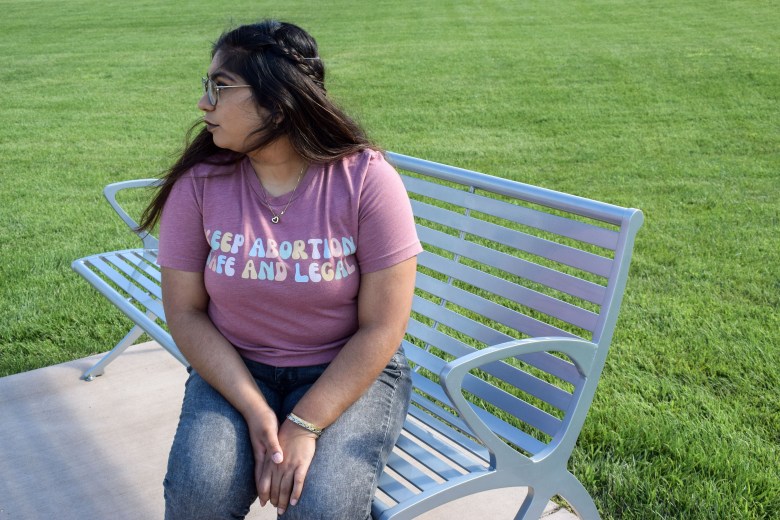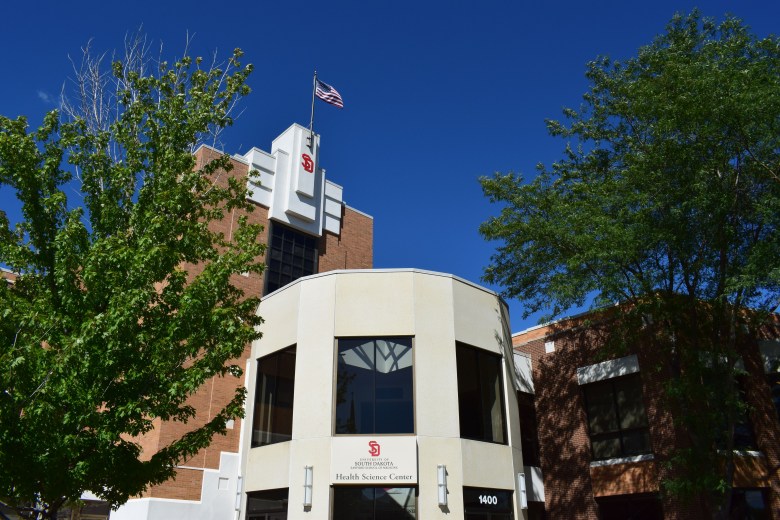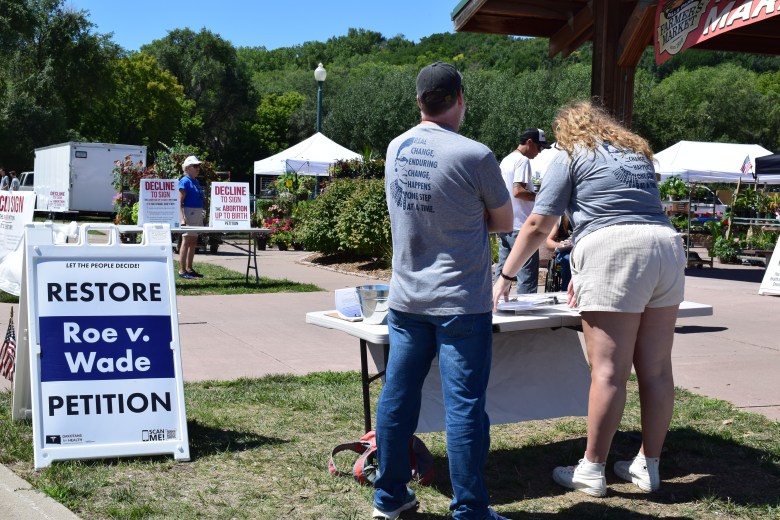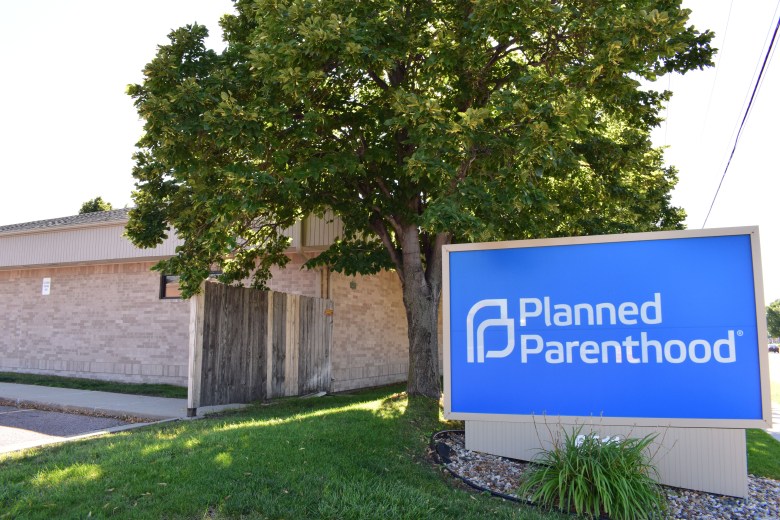SIOUX FALLS, S.D. — The journey to Boston was more than 1,500 miles. The plane ticket cost about $500. The hotel: another $400. She felt a little guilty about going, knowing that not everyone could afford this trip. But it was important; she was headed there to learn.

So, Amrita Bhagia, a second-year medical student from Sioux Falls, South Dakota, caught that flight to Boston to attend a weekend workshop hosted by the American College of Obstetricians and Gynecologists. There, she joined medical students from around the country for a summit on abortion care. She learned about medication abortion, practiced the technique of vacuum aspiration using papayas as a stand-in for a uterus, and sat in on a workshop about physician’s rights.
“It was the most empowering thing I could have imagined, especially coming from a state where people don’t want to talk about this stuff, ever,” said Bhagia, an aspiring OB-GYN at the University of South Dakota, a state where abortion is banned. “Other than me flying to Boston to go to an ACOG workshop, I have no idea how to get that training.”
Even before Roe v. Wade was overturned last summer, access to abortion training was uneven. Medical schools are not required to offer instruction on it, and students’ experiences vary wildly based on their institution.
But for Bhagia and med students like her in states where abortion has been banned or severely restricted, those training opportunities have gone from not great to nonexistent.

As a result of this insufficient gynecological training, experts warn, a generation of doctors will be ill-equipped to meet their patients’ needs. And across the country, maternal-care deserts will likely expand, as graduating medical students and residents avoid abortion-restricted states.
More than 30,000 medical students are training in states with abortion bans. Another 1,400 OB-GYN residents, who are required to receive abortion training as part of their specialty, are studying in states where abortion is banned or severely restricted.
“There’s a concern that in states with these restrictions, students are simply not getting enough training and exposure,” said Jody Steinauer, an OB-GYN, medical educator and director of the Bixby Center for Global Reproductive Health at the University of California, San Francisco. “There’s really a worry that if this continues, you’re going to be training a large group of OB-GYNs who can’t provide patient-centered, evidence-based care, no matter where they practice.”
“I would love to stay in Texas and train. This is a fantastic institution and I want to serve this community. But if I can’t get the training I need, I will have to leave.”
Chelsea Romero, a third-year medical student at McGovern Medical School in Houston, Texas
A related concern: Fewer medical students will choose to become OB-GYNs at all, fearing lawsuits or criminal prosecution. Figures show that OB-GYN residency applications are down across the country, but programs in states with abortion bans saw the biggest drops. Application rates for family medicine programs experienced a similar decline.
Abortion is currently banned in 14 states. All offer a narrow exception to this blanket prohibition when the mother’s life is at risk and a few of these states allow abortions in cases of rape or incest. But doctors say guidance on maternal health exceptions remains unclear, leaving physicians vulnerable to potential prosecution when treating patients.
“Students are seeing us struggle with this stuff and they’re like, ‘Yeah, why would I stay here for this?’” said Amy Kelley, a Sioux Falls OB-GYN and clinical associate professor at the University of South Dakota, a state where doctors can face up to two years in prison for violating the state’s ban.
These developments are particularly worrisome in South Dakota and other rural states that are already struggling to recruit and retain maternal healthcare providers. More than half of the state’s counties have no OB-GYNs, and rural South Dakotans with high-risk pregnancies often have no choice but travel to Sioux Falls for specialty care.

Limited access to maternal health care is reflected in troubling maternal mortality rates in abortion-restricted states across the country, where mothers are three times as likely to die due to their pregnancy, according to recent research. Barriers to abortion training could amplify physician shortages, increasing the number of maternal-care deserts and posing even greater risk to maternal health.
“We already have a physician shortage in this country,” said Pamela Merritt, a reproductive rights activist and director of Medical Students for Choice. “And we have the maternal health outcomes that come with that shortage. We have the worst pregnancy outcomes in the developed world. The last thing I want to see is people either having an insufficient education yet providing care, or people not even thinking of OB-GYN as a specialty in certain states.”
Although medical schools’ curricula vary, the Accreditation Council for Graduate Medical Education requires OB-GYN residency programs to provide access to abortion training. Residents with moral or religious objections are allowed to opt out. It’s a key component of an OB-GYN’s training, even for doctors who have no plans of becoming abortion providers.
An OB-GYN must be able to evacuate a uterus — whether the skill is used to care for a patient who’s had an incomplete miscarriage, to remove polyps for cancer diagnosis or assist someone who wants to terminate an unwanted pregnancy — and doctors-in-training can develop this ability through clinical abortion training.
“Such training is directly relevant to preserving the life and health of the pregnant patient in some instances,” ACGME program requirements state.

Yet in states with abortion bans, direct access to that training has vanished. In the past year, program directors in those states have scrambled to find out-of-state training opportunities so their residents can fulfill OB-GYN program accreditation requirements. But identifying and coordinating those training opportunities is no small feat.
“A lot of programs are grappling with the logistics piece of partnering with another institution to send a resident somewhere else,” said Alyssa Colwill, an assistant professor of obstetrics and gynecology at Oregon Health & Science University, who directs the university’s OB-GYN Ryan Residency program. OHSU plans to host a dozen out-of-state learners for four- to six-week clinical rotations during this academic year.
Programs like these require significant behind-the-scenes orchestration and space is limited. Visiting learners must apply for a medical license in their new state, complete required hospital training, take out new malpractice insurance, and secure housing and transportation.
More than half of South Dakota’s counties have no OB-GYNs; rural South Dakotans with high-risk pregnancies often have no choice but travel to Sioux Falls for specialty care.
In addition, programs in abortion-restricted states must often cope with the loss of a team member while residents travel for training.
“Programs really need their residents for services they provide,” said Colwill. “It’s not the easiest ask, to have a resident be gone from all clinical duties at their site for a month at a time.”
And while the overturn of Roe has had the most profound impact on residency programs, medical students who are not yet in a residency say they’re also feeling its effects. Doctors-in-training spend four years in medical school before beginning a residency in their chosen specialty.
“Bringing abortion up feels like a violation because it’s so taboo now,” said Bhagia. “I don’t know if I can even ask questions, and that’s impeding my learning.”

Chelsea Romero, a third-year medical student at McGovern Medical School in Houston, Texas, where abortion is restricted, said she has never faced repercussions for discussing abortion, but the risk of consequences is always on her mind.
“As a student, you’re being evaluated constantly, and these evaluations can dictate if you get residency interviews or not,” said Romero, who stressed she spoke only for herself and not as a representative of her university. “If I have those conversations with a wrong person in power, I could face blowback.”
One year after Roe was overturned, this stifled learning environment appears to be having an influence on where medical students are applying to residencies. One recent survey of medical students found that 58 percent of those responding were unlikely to apply to a residency program in a state with abortion restrictions, regardless of their specialty.
“I would love to stay in Texas and train. This is a fantastic institution and I want to serve this community,” said Romero. “But if I can’t get the training I need, I will have to leave.”
“Where you train is where you stay. It is rare that a resident will train in California and then move to rural South Dakota; it just doesn’t happen.”
Yalda Jabbarpour, a family physician and director of the Robert Graham Center, the American Academy of Family Physicians’ policy and research center
Decisions like hers will have ripple effects for the physician workforce in the coming years, said Yalda Jabbarpour, a family physician and director of the Robert Graham Center, the American Academy of Family Physicians’ policy and research center. “Where you train is where you stay,” she said. “It is rare that a resident will train in California and then move to rural South Dakota; it just doesn’t happen.”
That’s exactly what worries Erica Schipper, an OB-GYN in Sioux Falls.
South Dakota is one of only six states in the country without an OB-GYN residency program, which means medical students who want to become OB-GYNs must leave the state to receive their training. Schipper, who also teaches medical students at the USD Sanford School of Medicine, said the state’s abortion ban will make recruitment even harder.
“When I look at some of the brightest, up-and-coming medical students who we’ve sent away for their residency, we’re hoping they’ll come back, but I suspect they’re thinking twice,” said Schipper.

One of those students is Morgan Schriever, a Sioux Falls native and a graduate of USD’s Sanford School of Medicine. Schriever is a second-year OB-GYN resident at Southern Illinois University who said she always planned to return to her home state. But after training in Illinois, where abortion is protected, she’s having second thoughts.
Schriever is not only concerned that she would be unable to provide elective abortions in her home state. She’s also worried that South Dakota’s restrictive law would impede her ability to provide medically necessary abortions when treating patients experiencing pregnancy loss.
“Being in practice in Illinois, I come across these scenarios where I picture myself in South Dakota and I’m like, ‘Oh my God. How would I have handled this?’ I’m just not sure I want to put myself in that position where essentially my license is on the line.”
“There’s really a worry that if this continues, you’re going to be training a large group of OB-GYNs who can’t provide patient-centered, evidence-based care, no matter where they practice.”
Jody Steinhauer, director of the Bixby Center for Global Reproductive Health
These latest recruitment challenges particularly affect states already grappling with an OB-GYN shortage and struggling to improve maternal health care.
“Abortion-restrictive states are the same states that are traditionally rural and have a really hard time attracting physicians,” said Jabbarpour, “so any decline in those states is troublesome.”
Heather Spies, an OB-GYN who trains family medicine and general surgeon residents at Sanford Health, a hospital system in Sioux Falls, said the Sanford system is ensuring its residents are trained in basic obstetrics and gynecology care, including labor and delivery and miscarriage care. Even with the state’s abortion ban in place, she said, doctors at Sanford are able to provide miscarriage care and treat most pregnancy complications.
“I don’t think those learning experiences have changed because the procedures that we do at Sanford haven’t changed,” said Spies.
Still, there are some healthcare needs that require specialty care, certain medical emergencies that demand the expertise of an OB-GYN. And as abortion bans undermine training and push OB-GYNs out of restricted states, public health experts say they’re worried maternal-care deserts across the country will grow even drier.
“In the dead of a South Dakota winter blizzard, if you can’t get that helicopter to where it needs to go and that mom and that baby are in danger, you’re much more likely to save those lives if you have a doctor nearby,” said Schipper.
This story about OBGYN training was produced by The Hechinger Report, a nonprofit, independent news organization focused on inequality and innovation in education. Sign up for the Hechinger newsletter.



